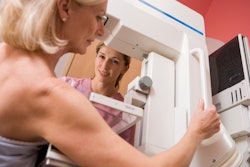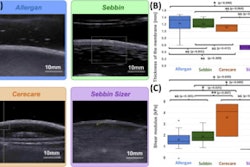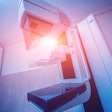Italian researchers have compiled a checklist of 10 points to remember about how precisely AI advances in breast imaging can transform radiology for improved patient care.
Dr. Matteo Mancino and his colleagues at the Advanced Radiology Center (ARC), Fondazione Policlinico Universitario Agostino Gemelli IRCCS, Rome, urged the medical imaging community to bear in mind the following points:
- AI's expanding role: AI extends beyond lesion detection to include risk stratification, predictive analytics, and workflow optimization in breast imaging.
- Precision in diagnosis: AI algorithms reduce false positives and improve lesion characterization, leading to a more accurate diagnosis.
- Workflow efficiency: AI enhances diagnostic workflow by prioritizing cases, automating tasks, and increasing overall efficiency.
- Comprehensive imaging approach: AI in breast imaging encompasses all modalities, including mammography, ultrasound, MRI, and others, offering a holistic approach to diagnosis and management.
- Beyond traditional CAD: AI surpasses conventional CAD limitations, enabling advanced image analysis and pattern recognition.
- Advanced image analysis: Machine learning and deep learning, especially convolutional neural networks (CNNs), provide sophisticated image analysis.
- Necessity of large datasets: Effective AI in breast imaging requires extensive datasets for training, ensuring the models are robust and accurate across diverse cases.
- Personalized care through integrated features: AI combines various imaging features to facilitate personalized treatment plans, tailoring care to individual patient needs and improving overall outcomes in breast imaging.
- Automated Analysis: AI provides automated quantitative analysis in breast imaging, supporting informed clinical decisions.
- Ethical considerations: The main challenges in AI include ensuring algorithm fairness, maintaining data privacy, and addressing potential biases.
Studies show there are several challenges in applying AI to mammography, including imbalanced datasets, computational issues (mammography images are extremely high-resolution), and weakly supervised learning (training data may not include lesion locations, requiring models to learn from mammogram-level labels indicating the presence or absence of cancer), the authors noted in a poster presentation at RSNA 2023 in Chicago.
In breast ultrasound, advanced AI techniques can improve image quality by reducing noise and enhancing the contrast of images, making it easier to identify abnormalities. Also, AI facilitates the reconstruction of 3D ultrasound images, providing a more comprehensive view of the breast tissue and aiding in the detection of lesions that may be missed in 2D images, they pointed out.
"AI, particularly machine learning-based CAD systems, are increasingly used in breast MRI for detecting challenging lesions like nonmass enhancing lesions. These systems leverage multiparametric MRI and radiomics for more accurate and detailed analysis," the Rome researchers explained. "The integration of multiparametric radiomics with machine learning shows great potential in clinical practice for lesion differentiation in breast lesion discrimination."
AI applications in breast MRI also extend to assessing and predicting responses to primary treatments, offering valuable insights for personalized treatment planning. AI models are being developed to analyze MRI scans for personalized risk assessment, identifying patients who may be at higher risk for breast cancer based on subtle imaging markers, they continued.
A critical challenge in AI for breast imaging is ensuring the confidentiality and security of patient data. This involves implementing robust measures to protect privacy within extensive datasets. Additionally, there is no standardized curriculum for AI education in radiology, making it challenging to ensure consistent and comprehensive training across different programs.
"It's essential to develop AI algorithms that are unbiased and equitable. Recognizing and mitigating potential biases in training data is crucial to ensure fair medical diagnoses," the authors wrote. "AI applications in healthcare must adhere to regulatory guidelines, including FDA approvals, to ensure safety and compliance in innovative approaches."
Transparency in AI systems is key to making understandable and easy-to-scrutinize decisions; advocating for accountability in AI decision-making processes is particularly vital in medical diagnoses, they stated.
AI's role in augmenting, not replacing, radiologists must be emphasized too. Ethical considerations include addressing concerns about job displacement and clarifying the complementary role of AI in enhancing radiologist expertise, the group concluded.
Editor's note: The co-authors of this exhibit were Dr. Anna D'Angelo, Dr. Flavia Caprini, Dr. Ludovica Iaccarino, Dr. Charlotte Trombadori, and Prof. Paolo Belli.



















